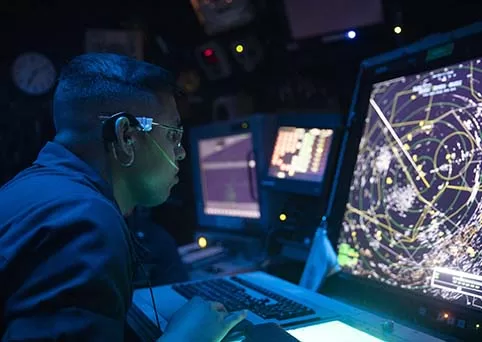Progress, Not Perfection
August 17, 2023

The Federal Aviation Administration employs more than 14,000 air traffic controllers in the United States. Each day, some fraction of these people manage an average of 45,000 flights. This means safely and efficiently coordinating take-offs, approaches, and landings at busy airports. They continuously monitor rapidly changing situations that have loads of moving parts. They must know what to do, and they must calmly, clearly, concisely, and quickly communicate the proper instructions to pilots, telling them not only what actions to take but when to take them. And, oh yeah, they need to do this without letting the planes crash into each other.
What’s the secret to surviving more than three minutes as an air traffic controller?
It is to start out with something the professionals call “getting the picture.” The most successful chess players and military commanders have a flair for rapidly understanding the situation on the board or battlefield in front of them. The French call this coup d’oeil, which is best translated as being capable of taking in a comprehensive view of the situation “in a single glance.” Napoleon was famous for coup d’oeil. So were Generals Ulysses S. Grant and George S. Patton. They looked at a battlefield map or they looked out at the battlefield itself and could, at a glance, visualize all the possible moves.
So it is with seasoned air traffic controllers. They look at the radar, and what they get is the “picture,” a real-time vision of each aircraft in relation to every other aircraft within a certain space. Every decision such air traffic controllers make and every instruction they give to each pilot is made or given within the frame of this picture.
Assessing your business at any point in time demands that you “get the picture” of the dynamic environment within which your strategy is being deployed. All the molecules are in motion, so you need to be both agile and focused. Executing a strategic business plan transforms static strategy into dynamic deployment. Time presses down on you, but even though the clock is running, you always have some room for maneuver. Time may seem like an adversary, but it is also an ally—just as long as you understand that your goal in executing a plan is not a theoretical state of perfection but a real-life ongoing process of progress.

The critical ingredients in making and measuring progress are current data and projected trends for each goal or critical success factor. Don’t ask, Are we there yet? Ask Are we making progress toward achieving our plan? The answer to this question is expressed in performance metrics, results produced, and whether prioritized actions are occurring as planned. If you are coming up short, get the picture by first identifying the problem or the need.
Once you have done this, determine the current picture—the state of the situation right now—by observing and documenting the work processes involved. Then draw the picture. Gather your team around a whiteboard and chart each step in the process or processes involved. This will enable you to quantify the size of the problem. You make a big step toward real progress when you can say “x number of customer deliveries are late” or “x number of manufacturing errors occurred last quarter.” It helps if you can present this quantified data graphically: a literal picture.
Keep going. Ask and answer the questions that will get you to root causes:
- What information do we need to work more effectively?
- Where are the delays in the process? Where are they the longest?
- Where are we failing to communicate adequately?

With each answer, you will make more progress. You will improve the picture—continuously.
Evaluate each solution you try—not to achieve perfection, but to make more progress. If the results of your evaluation vary substantially from your expectations, use the feedback to make further changes in your processes. Make progress. You’ll know when to stop when you have attained all the strategic goals that have been set. Of course, by that time, your target may have moved and the situation may have changed. Make progress by capturing a new picture and getting to work on what it shows you. That’s progress, but there are always more planes to launch and to land.
